How long does a fully charged portable charger last?
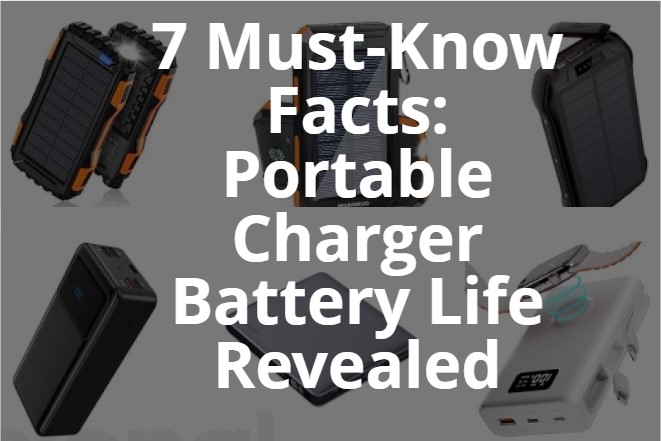
Portable Charger Essentials: Unveil the top 7 facts that shape the efficiency and endurance of your portable chargers, ensuring peak device performance. Have you ever been stuck in a situation where your phone battery was draining faster than you could blink? We’ve all been there, desperately searching for an outlet or a lifeline to keep our devices alive.
Well, fear not, my friends, for today we are diving into the world of portable chargers. You might be surprised to learn just how long these tiny powerhouses can actually keep your gadgets juiced up. Get ready to be blown away with some mind-boggling facts as we unravel the question: How long does a fully charged portable charger last? So sit back, relax, and prepare to unleash the power of portable charging!
Table of Contents
Power up and stay connected with our bestselling portable chargers!






Understanding Portable Chargers
In this blog section, we will provide an overview of what portable chargers are and how they work. We’ll cover the different types of portable chargers available in the market and explore their various features. By the end, you’ll have a solid understanding of portable chargers and be ready to choose the right one for your needs.



What are Portable Chargers?
Portable chargers, also known as power banks or battery banks, are compact devices that allow you to charge your electronic devices on the go. They are designed for convenience and portability, providing backup power when you don’t have access to a wall outlet.
How do Portable Chargers Work?
Portable chargers consist of a lithium-ion battery, circuitry, and output ports. The battery stores electrical energy, which can be later transferred to your devices. The circuitry manages the power flow, ensuring that the right amount and voltage are delivered to your devices safely.
When your portable charger is fully charged, you can connect your smartphone, tablet, smartwatch, or any other USB-compatible device to it using a USB cable. The charger will transfer its stored power to your device, allowing you to recharge it wherever you are.
Types of Portable Chargers
Portable chargers come in various shapes, sizes, and capacities. Here are the main types you’ll find in the market:
- Pocket-Sized Chargers: These small and lightweight chargers are perfect for everyday use. They typically have a capacity of around 3,000mAh to 5,000mAh, which can provide one to two full charges for most smartphones.
- Mid-Range Chargers: With capacities ranging from 5,000mAh to 10,000mAh, mid-range chargers offer more power without sacrificing portability. They can provide multiple charges for smartphones and even some tablets.
- High-Capacity Chargers: If you need to charge multiple devices or power-hungry gadgets like laptops or DSLR cameras, high-capacity chargers are the way to go. These chargers typically have capacities above 10,000mAh, allowing you to charge devices multiple times without needing a recharge.
Features to Consider
When choosing a portable charger, consider the following features:
- Capacity: The higher the capacity, the more charges you can get out of your portable charger. However, keep in mind that higher capacity also means a larger and heavier device.
- Output Ports: Look for chargers with multiple output ports, especially if you need to charge multiple devices simultaneously.
- Charging Speed: Some chargers support fast charging technologies like Qualcomm Quick Charge or Power Delivery, allowing for quicker recharging of compatible devices.
- Additional Features: Some portable chargers come with built-in cables, LED flashlights, or even wireless charging capabilities. Consider these extras if they align with your needs.
Comparing Popular Brands
To help you navigate the world of portable chargers, here’s a quick comparison of popular brands:
| Brand | Capacity (mAh) | Output Ports | Charging Speed | Additional Features |
|---|---|---|---|---|
| Anker PowerCore | 10,000 | 1 | Quick Charge | Compact & Lightweight |
| RAVPower Turbo | 20,000 | 2 | Power Delivery | Built-in USB-C Cable |
| Jackery Bolt | 6,000 | 2 | – | Built-in Micro-USB & Lightning Cables |
| Xiaomi Mi | 5,000 | 1 | Quick Charge | Budget-friendly |
Remember, this is just a small selection from the wide range of chargers available. Take into account your specific needs and preferences before making a decision. Top 10 Rules for Choosing the Ideal Hotel
Factors Affecting Battery Life of Portable Chargers
Are you tired of your portable charger running out of battery just when you need it the most? Understanding the factors that can affect the battery life of your charger can help you make informed decisions and ensure that your device remains charged and ready when you need it. In this article, we will explore the key factors that can impact the battery life of a fully charged portable charger.



1. Battery Capacity
The battery capacity of a portable charger is one of the most significant factors determining its longevity. It refers to the amount of electrical charge that the battery can store, usually measured in milliampere-hours (mAh). The higher the battery capacity, the longer your charger will last. Consider a scenario where you have a 10,000mAh charger and a 5,000mAh portable charger. With both fully charged, the 10,000mAh charger will provide twice as much power before needing a recharge compared to the 5,000mAh charger.
2. Device Compatibility
Device compatibility is another crucial aspect affecting the battery life of your portable charger. Different devices have varying charging requirements, and not all chargers are created equal. Some chargers may not be optimized to deliver the required power output for certain devices, resulting in reduced charging speed and increased energy loss. To ensure optimal performance and maximum battery life, it is advisable to choose a portable charger that is specifically designed to be compatible with your device.
3. Charging Speed
The charging speed of a charger plays a significant role in determining its battery life. Faster charging speeds may seem convenient, but they can also result in decreased overall battery longevity. Rapid charging generates more heat, which can have a detrimental effect on the battery’s lifespan over time. Slower charging speeds, on the other hand, can be more gentle on the battery, thereby prolonging its life. Finding the right balance between charging speed and battery preservation is key to optimizing your portable charger’s longevity.
4. Usage Patterns
Your usage patterns also impact the battery life of your portable charger. How frequently you charge and discharge the battery, as well as the duration of each charging cycle, can affect its overall lifespan. Frequent shallow discharges and recharges may lead to a decrease in battery capacity over time. Conversely, deeper discharges followed by full recharges can help maintain the battery’s health. A smart approach would be to avoid letting the battery drain completely before recharging and aim for regular full recharges instead.
The Average Battery Life of Portable Chargers: How Long Can You Expect Your Charger to Last?
As technology continues to advance and our reliance on electronic devices grows, chargers have become an essential accessory for many of us. Whether you’re a frequent traveler, a busy professional, or simply someone who uses their smartphone or tablet extensively throughout the day, having a reliable source of power on the go is crucial.



In this article, we will delve into the average battery life of different types of portable chargers. We will provide you with an estimate of how long a fully charged charger can last, taking into consideration factors such as battery capacity and other variables.
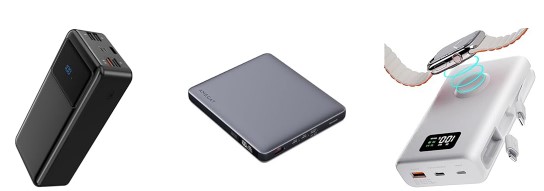
Types of Portable Chargers
Before we dive into the details, let’s briefly discuss the different types of chargers available on the market. These can be categorized into three main types:
- Pocket-Sized Chargers: These compact chargers are perfect for those who prefer portability and convenience over long battery life. With battery capacities typically ranging from 2000mAh to 5000mAh, they can provide one to two full charges for most smartphones. However, due to their smaller size, their own recharging time may be quicker.
- Mid-Range Chargers: Mid-range portable chargers usually come with a capacity of 5000mAh to 10000mAh. They strike a balance between portability and power, offering multiple charges for smartphones and providing decent charging capabilities for tablets or other devices with higher power demands.
- High-Capacity Chargers: These heavy-duty chargers boast battery capacities of 10000mAh or more. If you need to charge multiple devices multiple times without worrying about running out of power, high-capacity chargers are your go-to option. They can deliver multiple charges to smartphones, tablets, and even laptops, making them ideal for longer trips or situations where you won’t have access to traditional power outlets for extended periods.
Estimating Battery Life
Now that we’ve covered the different types, let’s talk about how long a fully charged portable charger can last. It’s important to note that the actual battery life can vary based on several factors:
- Battery Capacity: As mentioned earlier, the battery capacity directly affects the charging capabilities of chargers. Generally, the higher the capacity, the longer the charger can sustain multiple charges.
- Device Power Requirements: The power draw of the device you’re charging plays a crucial role in determining battery life. For instance, charging a smartphone will consume less power compared to charging a tablet or a laptop. Higher-capacity devices will deplete the charger’s battery more quickly, so it’s important to consider this when estimating battery life.
- Number of Recharge Cycles: Over time, all batteries experience a decrease in capacity. Portable chargers are no exception. Their battery life will gradually decrease after a certain number of recharge cycles. However, high-quality chargers from reputable brands tend to have a longer lifespan, delivering consistent performance for an extended period.
Practical Examples
To give you a clearer understanding of what to expect, let’s provide some practical examples. Please note that these are average estimates and can vary depending on various factors:
- Pocket-Sized Charger Example:
- Battery Capacity: 3000mAh
- Charging a smartphone with a battery capacity of 3000mAh, you could expect approximately one full charge.
- Recharging the charger may take around two to three hours.
- Mid-Range Charger Example:
- Battery Capacity: 8000mAh
- Charging a smartphone with a battery capacity of 3000mAh, you could enjoy up to two and a half full charges.
- For larger devices like tablets, expect around one full charge.
- Recharging the portable charger might take around four to five hours.
- High-Capacity Charger Example:
- Battery Capacity: 20000mAh
- Charging a smartphone with a battery capacity of 3000mAh, you could get approximately six to seven full charges.
- For tablets, expect around two full charges, and for laptops, you might get one charge or more depending on the specific model.
- Recharging the charger may take around eight to ten hours.
Remember that these examples serve as guidelines, and actual performance may vary based on factors such as the charger’s efficiency, cable quality, and charging conditions.
Tips to Extend Battery Life of Your Portable Charger
Having a portable charger can be a lifesaver in today’s fast-paced, always-on-the-go world. Whether you’re a frequent traveler, a busy professional, or simply someone who relies heavily on electronic devices, a charger ensures that you never run out of battery power when you need it the most. However, to get the most out of your charger, it’s important to take good care of its battery. Here are some practical tips and recommendations to help you extend the battery life of your portable charger:



1. Charge Regularly, But Not Too Frequently
Charging your portable charger regularly is essential to ensure it’s ready to provide power whenever you need it. However, avoid overcharging it, as this can lead to decreased battery capacity over time. Aim to keep your charger’s battery level between 20% and 80% to strike a balance between keeping it charged and preventing unnecessary wear on the battery.
2. Optimal Charging Habits
When charging your charger, follow these optimal charging habits to maximize its battery life:
- Use the original charger or a charger recommended by the manufacturer.
- Avoid charging your portable charger in extreme temperatures, as this can damage the battery. Optimal charging temperature ranges are usually specified in the user manual.
- Disconnect the charger once the battery is fully charged. Leaving it plugged in for extended periods can cause heat buildup and shorten battery life.
3. Proper Storage
Proper storage can significantly impact the longevity of your portable charger’s battery. Follow these guidelines to ensure you store it correctly:
- Store your charger in a cool, dry place when not in use.
- Avoid leaving it in direct sunlight or near heat sources, as this can damage the battery.
- If you won’t be using your portable charger for an extended period, keep it partially charged, around 50% to 80%. Storing it fully charged or fully depleted for long durations can lead to reduced battery lifespan.
4. Regular Maintenance
Performing regular maintenance on your charger can help prolong its battery life. Here’s what you can do:
- Clean the charging ports and connectors regularly using a soft, lint-free cloth. Accumulated dirt and debris can hinder the charging process and cause unnecessary strain on the battery.
- Check for firmware updates or software upgrades for your portable charger. These updates often include battery optimization enhancements, ensuring optimal performance.
5. Consider Battery Capacity and Technology
When purchasing a charger, pay attention to the battery capacity and technology. Here are a few factors to consider:
- Battery Capacity: Consider your charging needs and select a charger with a capacity that suits your usage patterns. Higher capacity portable chargers can provide more charging cycles and overall usage time.
- Battery Technology: Look for chargers with advanced battery technologies like lithium-ion or lithium-polymer. These batteries offer improved performance, faster charging, and better efficiency compared to traditional options.

The Power to Keep You Going: Unleashing the Endless Potential of Your Fully Charged Portable Charger!
In conclusion, we have explored the factors that determine the lifespan of a fully charged portable charger. From battery capacity and device compatibility to charging habits, there are several key considerations to keep in mind. While each charger has its own unique lifespan, it is essential to select one that aligns with your specific needs and usage patterns.
To ensure optimal longevity, it is recommended to invest in a portable charger with a larger battery capacity, as they generally provide more power and longer usage time. Additionally, being mindful of compatible devices and following proper charging practices, such as avoiding excessive heat and maintaining appropriate charging cycles, will help prolong the life of your charger.
Remember, the reliability and longevity of a fully charged charger are crucial, especially when you find yourself in need of extra power on the go. By considering these factors and investing wisely, you can enjoy the convenience and peace of mind that comes with a portable charger that lasts. So, choose wisely, recharge confidently, and never be left powerless again.
FAQ
Question 1: What is a good portable charger?
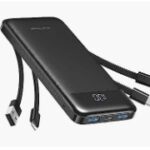
Answer 1:
Best Overall: The Anker PowerCore Slim 10000 PD stands out for its slim design, reliable power capacity, and PD (Power Delivery) feature for fast charging.
Best for iPhones: The Apple MagSafe Battery Pack is specifically designed for iPhone users, offering seamless integration and wireless charging capabilities.
Best for Emergencies: The Eton American Red Cross Clipray is a must-have for emergency preparedness, featuring a hand crank for manual charging.
Best for Laptops: The Mophie Powerstation Pro AC is ideal for laptop users, offering a high power output and an AC outlet for versatile charging.
Best No-Frills Option/Best Budget: Anker PowerCore Fusion 5000 is an excellent budget-friendly choice, providing straightforward, efficient charging without extra bells and whistles.
Question 2: Which brand power bank is best?

Answer 2:
MI Power Bank 3i 20000mAh: Highly rated with a 4.2/5 customer rating, this power bank offers a substantial 20000mAh capacity for extended use, priced at Rs. 1,998. Ideal for those needing extra power on the go.
Portronics 10000mAh Power Bank: With a customer rating of 3.5/5, this is an affordable option at Rs. 699, suitable for moderate use with its 10000mAh capacity.
Duracell Power Bank 10000 mAh: Known for its reliability, this power bank has a 3.9/5 customer rating and is priced at Rs. 1,699. It’s a strong choice for those prioritizing trusted brand quality.
Redmi 10000 mAh Fast Charging Slim Power Bank: Scoring a 4.2/5 rating, this slim and fast-charging power bank is priced at Rs. 1,098, making it an excellent option for those seeking efficiency and portability.
Question 3: What’s the difference between a portable charger and a power bank?

Answer 3: The terms “portable charger” and “power bank” are often used interchangeably in the context of devices designed to charge electronics on the go. However, there can be subtle differences. A portable charger generally refers to any external battery that can be carried around easily and used to charge various devices, such as smartphones, tablets, or even car batteries. A power bank typically denotes a more specific type of portable charger, usually compact and designed primarily for charging smaller devices like smartphones and tablets. Both serve the purpose of providing power to devices when a wall outlet is not available, but the term “power bank” is more commonly associated with smaller, handheld charging devices.
Question 4: What is the lifespan of a power bank?
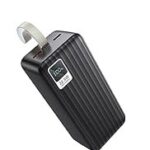
Answer 4: The average lifespan of a power bank is typically around 3 years, but this can vary depending on usage and quality. The key factor influencing a power bank’s lifespan is the type and quality of its battery cells. Most power banks use 18650 lithium-ion cells, known for their durability and efficiency. The life expectancy of these cells is often measured in charge-recharge cycles, with a common range being around 500 to 800 cycles. Some high-quality models can even extend to about 800-900 cycles. Regular usage, charging habits, and environmental factors also play significant roles in determining the overall lifespan of a power bank. Proper maintenance, such as avoiding extreme temperatures and not depleting the battery completely, can help in extending its life.
Question 5: Are power banks worth it?

Answer 5: Absolutely, power banks are a valuable investment, especially for those who are frequently on the move. In today’s digital age, we rely heavily on various electronic devices like smartphones, tablets, and laptops. When traveling or in situations where access to a wall outlet is limited or unavailable, a power bank becomes an essential tool. It ensures that your devices remain charged and functional throughout the day.
Moreover, power banks come in various capacities and sizes, allowing you to choose one that best fits your needs. They are particularly useful during long trips, outdoor adventures, or even in daily scenarios like commuting where charging opportunities might be scarce. In addition to their practicality, modern power banks often include features like fast charging, multiple ports for charging several devices simultaneously, and even wireless charging capabilities. All these benefits make power banks a worthwhile addition to your tech arsenal.






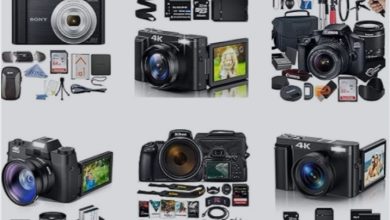

It would be great to hear some tips on extending the battery life of a portable charger. Are there any best practices to follow?
I never knew that the battery life of a portable charger could vary depending on the capacity and the devices being charged. This article gave me a better understanding of the factors affecting its longevity.
I found this article very informative and helpful. It answered all my questions about the battery life of a fully charged portable charger.
This article was a timely read for me as I am considering buying a portable charger. Now I know what to look for and what to expect in terms of its battery life.
I have been using a portable charger for a while now, and I find that it usually lasts for a full day of charging my devices. However, I would love to know if there are any specific factors that can affect its battery life.